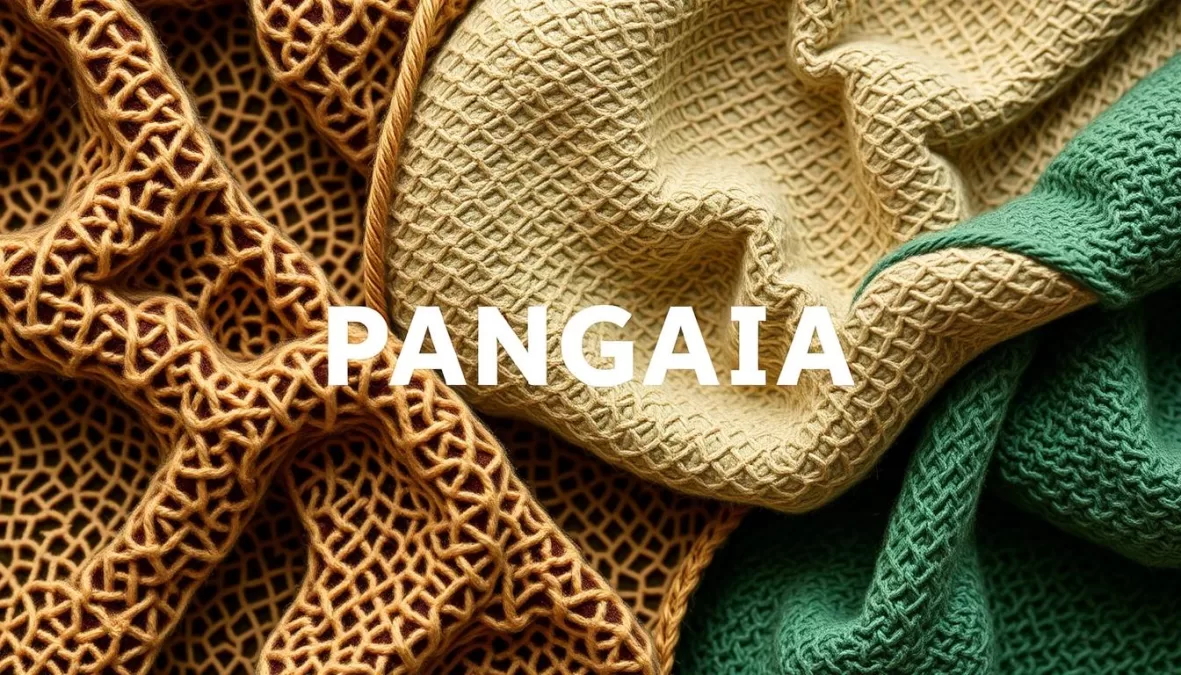The fashion industry is undergoing a significant transformation as consumers become more environmentally conscious, driving demand for sustainable fashion and better practices from brands.
With up to 100 billion clothing items produced annually worldwide, the environmental impact of the fashion industry is substantial. However, some innovative brands are now leading the charge in sustainable clothing, implementing eco-friendly materials and ethical labor practices.
These forward-thinking brands are not just talking about sustainability—they’re actively transforming their supply chains and production methods to reduce environmental impact and waste.
As we move into 2025, it’s clear that the future of fashion lies in sustainability, and these top brands are setting new standards for the industry.
Key Takeaways
- The fashion industry is shifting towards sustainability due to increasing consumer awareness.
- Innovative brands are leading the way in sustainable fashion with eco-friendly materials and practices.
- These brands are transforming their supply chains and production methods to reduce environmental impact.
- Sustainability is becoming the new standard in the fashion industry.
- Consumers are driving demand for better practices from fashion brands.
The Rise of Sustainable Fashion
Sustainable fashion is on the rise, driven by consumer awareness of the environmental and social impacts of their purchasing decisions. As shoppers become more informed, they are seeking out brands that prioritize sustainability and environmentally friendly practices.
The Environmental Impact of Fast Fashion
Fast fashion has a significant environmental impact, with the UN reporting that shoppers buy 60% more clothing but keep items for only half as long as they did in 2004. This “take, make, dispose” approach results in substantial waste and pollution. The production and distribution of fast fashion contribute to greenhouse gas emissions, water pollution, and textile waste.
| Environmental Impact | Fast Fashion | Sustainable Fashion |
|---|---|---|
| Greenhouse Gas Emissions | High | Low |
| Water Pollution | Significant | Minimal |
| Textile Waste | Substantial | Reduced |
Consumer Shift Towards Sustainable Choices
Consumers are increasingly questioning the true cost of their clothing purchases, considering environmental and social impacts. Research shows that younger generations are more likely to research brand sustainability practices before making purchasing decisions. The COVID-19 pandemic accelerated this shift, with consumers reassessing their values and prioritizing purpose-driven brands.
As consumers become more mindful of their purchasing habits, they are driving change in the fashion industry, demanding more sustainable clothing options and practices that benefit both people and the planet.
What Makes a Brand Truly Sustainable?
Truly sustainable brands are those that integrate environmental responsibility into every aspect of their operations. This involves a holistic approach that encompasses materials sourcing, production processes, labor practices, and end-of-life product management.
Eco-Friendly Materials and Production
Sustainable brands prioritize the use of eco-friendly materials, such as biodegradable fibers and recycled textiles. For instance, Finisterre, a Cornwall-based clothing brand, sources materials made from ocean plastic, reducing the amount of waste in the oceans. By adopting such practices, brands can significantly minimize their environmental footprint.
Ethical Labor Practices
Beyond environmental considerations, truly sustainable brands also ensure ethical labor practices. This includes fair wages, safe working conditions, and transparent supply chains. Ethical labor practices are crucial for maintaining the integrity of the brand and ensuring that sustainability efforts are not compromised by exploitative practices.
Circular Economy Initiatives
Circular economy initiatives are pivotal in achieving sustainability. These initiatives aim to eliminate waste by designing products for longevity, repairability, and eventual recycling or biodegradation. Strategies include take-back programs, rental and subscription models, and innovative recycling technologies. By adopting circular economy models, brands like Finisterre can keep materials in circulation, reducing the need for new raw materials and minimizing waste.
By embracing eco-friendly materials, ethical labor practices, and circular economy initiatives, brands can make a significant impact on reducing their environmental footprint and promoting sustainability throughout their operations.
How We Selected the Top 10 Sustainable Brands 2025
Our selection of the top 10 sustainable brands in 2025 was based on a comprehensive assessment of their commitment to sustainable practices. We evaluated how these brands operate within their supply chain, ensuring that their company values align with sustainability and environmental stewardship.
Our Evaluation Criteria
To determine the top brands, we considered several key factors, including their use of eco-friendly materials, ethical labor practices, and environment-friendly production methods. Brands that demonstrated a clear commitment to sustainability through regular reporting and science-based targets were given preference. For instance, Stella McCartney uses blockchain technology to track the lifecycle of materials, ensuring sustainability among their supply chain partners.
Transparency and Accountability
Transparency is crucial for our top 10 brands, with each providing detailed information about their supply chains, manufacturing processes, and environmental impact. Key aspects we looked for included:
- Detailed sustainability reports and science-based targets.
- Third-party audits and public commitments to specific sustainability goals.
- Honest communication about challenges and setbacks in their sustainability journey.
- Collaboration with industry peers and NGOs to address systemic sustainability issues.
By focusing on these criteria, we identified brands that are genuinely committed to sustainable practices, making a positive impact on the environment.
PANGAIA: Science-Driven Sustainability
By combining cutting-edge material science with environmental initiatives, PANGAIA sets a new standard for sustainable brands. Their commitment to science-driven sustainability is evident in their innovative products and conservation efforts.
Revolutionary Material Science
PANGAIA is at the forefront of material innovation, developing sustainable materials that reduce environmental impact. Their research and development team works tirelessly to create materials that are not only sustainable but also performance-driven.
Environmental Conservation Projects
PANGAIA invests in various environmental conservation projects that address critical ecological challenges. Their ‘Bee The Change’ initiative, launched at COP28, aims to protect global bee populations through research, habitat restoration, and policy advocacy. The initiative is part of a broader commitment to supporting the world‘s biodiversity and addressing climate change.
PANGAIA partners with organizations like SeaTrees to restore mangrove ecosystems, which sequester carbon at rates up to four times higher than terrestrial forests. Their Tomorrow Tree Fund supports reforestation efforts projects worldwide, with a commitment to plant, protect, and restore trees in areas affected by deforestation.
By adopting sustainable practices, PANGAIA demonstrates its dedication to reducing its ecological footprint and promoting a more sustainable future for the fashion industry.
Stella McCartney: Luxury Meets Sustainability

Stella McCartney is redefining luxury fashion with a commitment to sustainability. As a pioneer in the luxury sector, the brand has been at the forefront of incorporating eco-friendly practices into its designs and production processes.
Animal-Free Luxury Materials
Stella McCartney is known for its use of animal-free luxury materials, ensuring that style and ethics are not mutually exclusive. The brand’s commitment to avoiding animal products has led to the development of innovative, sustainable materials that are both luxurious and environmentally friendly.
Transparency and Supply Chain Innovation
The brand has pioneered supply chain transparency in the luxury sector, publishing detailed environmental profit and loss accounts that quantify its environmental impact. By utilizing blockchain technology, Stella McCartney tracks materials from source to store, allowing consumers to verify the sustainability credentials of their purchases.
The company’s approach to supplier relationships includes long-term partnerships and collaborative development of new sustainable materials and processes. This not only enhances transparency but also drives innovation in sustainable fashion.
Stella McCartney’s World of Sustainability platform provides consumers with detailed information about the environmental impact of specific products and the brand’s overall sustainability initiatives. The company’s commitment to transparency extends to acknowledging areas where they still need to improve, setting a standard for honest communication about sustainability challenges.
Everlane: Radical Transparency

Everlane is revolutionizing the fashion industry with its commitment to radical transparency. By providing detailed information about their production processes and supply chain, Everlane is setting a new standard for transparency in the fashion industry.
Ethical Factories and Fair Wages
Everlane partners with factories that adhere to strict ethical standards, ensuring fair wages and safe working conditions for all workers. This commitment to fair labor practices is reflected in their transparent supply chain.
The brand’s dedication to ethical factories is a crucial aspect of their radical transparency. By working closely with their manufacturing partners, Everlane ensures that their production processes meet the highest standards of ethics and quality.
Water Conservation and Recycling Initiatives
Everlane has implemented innovative water conservation measures in their production processes. Their denim factory in Vietnam recycles 98% of the water used in production, significantly reducing the environmental impact of their products.
The brand’s commitment to recycling initiatives extends to their use of recycled materials and reduction of waste. By transforming plastic bottles into durable polyester, Everlane is diverting waste from landfills and oceans, minimizing their environmental impact.
By adopting sustainable practices throughout their supply chain, Everlane is making a positive impact on the environment. Their commitment to transparency and sustainability is a step towards a more responsible fashion industry.
Finisterre: Ocean-Inspired Conservation
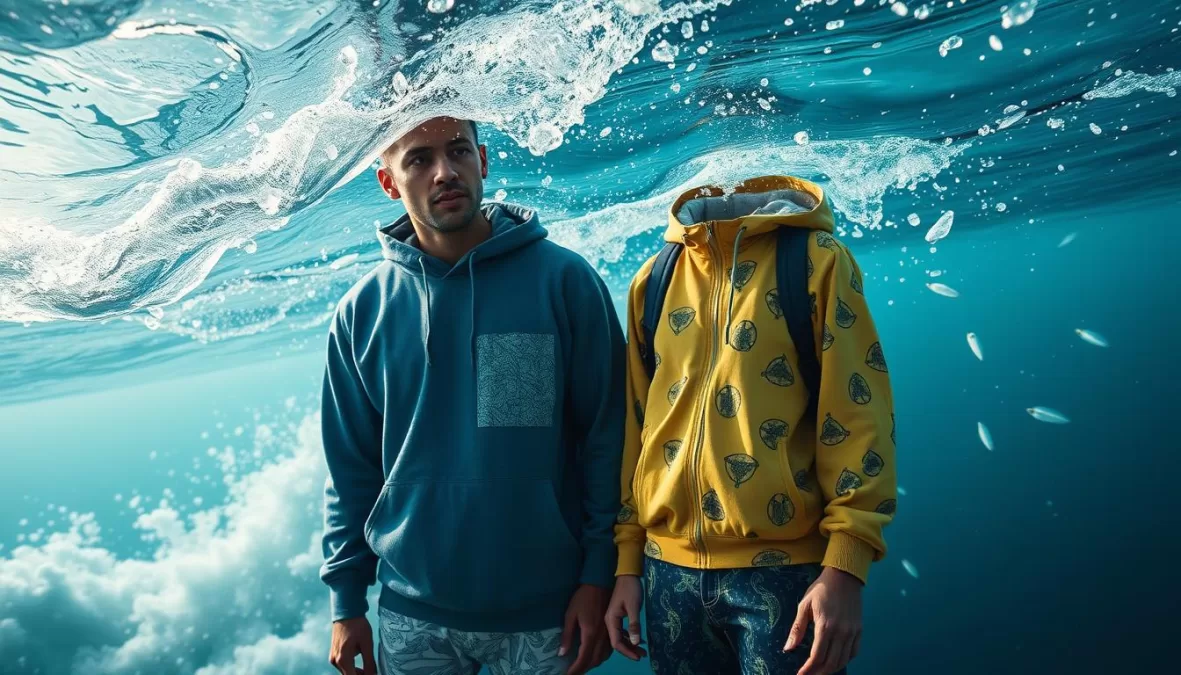
Finisterre’s ocean-inspired approach to fashion is not just about aesthetics; it’s about creating a positive environmental impact. The brand has developed a range of initiatives that go beyond sustainable clothing, aiming to unlock ocean access for all.
Recycled Ocean Plastics Materials
Finisterre incorporates recycled ocean plastics into their materials, reducing waste and promoting sustainable practices. This commitment to using recycled materials helps minimize the brand’s environmental impact.
Ocean Access and Awareness Programs
The Finisterre Foundation funds swimming lessons for children with disabilities and modifies wetsuits to improve access to the water. These initiatives help raise awareness for our seas and support the next generation of ocean conservationists. By organizing beach clean-ups and educational events, Finisterre engages their community in direct environmental action, fostering a sense of responsibility towards the world‘s oceans.
Through their comprehensive approach to ocean conservation, Finisterre sets a compelling example for the fashion industry, demonstrating that style and sustainability can go hand in hand.
Pact: Affordable Organic Essentials

Pact is revolutionizing the fashion industry with its commitment to affordable organic essentials. By using organic cotton and promoting fair trade practices, Pact is making a significant impact in the world of sustainable fashion.
Organic Cotton Farming Practices
Pact sources its cotton from India, where it promotes water-conserving practices. The brand’s commitment to organic cotton farming not only reduces the environmental impact but also supports local farmers.
Fair Trade Certification and Impact
Pact’s Fair Trade certification ensures that farmers and factory workers receive fair compensation for their labor and work in safe, healthy conditions. The Fair Trade premium paid by Pact goes directly to worker-controlled funds that invest in community development projects chosen by the workers themselves. These community investments have funded schools, healthcare facilities, clean water access, and other critical infrastructure in the regions where Pact’s products are made.
The brand’s commitment to Fair Trade extends throughout their supply chain, from cotton farming to final garment production, ensuring ethical practices at every stage. Pact regularly shares stories and updates about the impact of their Fair Trade commitments, connecting consumers with the real people behind their clothing.
Vuori: Climate Neutral Athletics

Vuori is revolutionizing the athletic wear industry with its commitment to climate-neutral apparel. As a brand that prioritizes sustainable practices, Vuori has made significant strides in reducing its environmental footprint. Their dedication to using recycled materials in their products is just one aspect of their comprehensive sustainability strategy.
Carbon Offset Initiatives
Vuori has achieved climate neutrality through a combination of reducing emissions and investing in carbon offset projects. This commitment extends to their supply chain, where they are working to minimize their overall waste output. By partnering with CleanHub, Vuori offsets its plastic impact by 100%, making them plastic neutral.
Plastic Reduction Strategies
The brand has implemented several plastic reduction strategies across their operations. Some key initiatives include:
- Switching to recycled materials for garment bags.
- Replacing conventional plastic packaging with recycled and recyclable alternatives, reducing virgin plastic use by over 80%.
- Prioritizing sustainable clothing production methods that minimize environmental impact.
- Minimizing single-use plastics in their in-store operations.
By adopting these sustainable practices, Vuori is not only reducing its environmental footprint but also setting a new standard for sustainability in the athletic wear industry. Their commitment to sustainable clothing and reducing waste is a step towards a more environmentally conscious future.
Alternative Apparel: Zero Waste Commitment
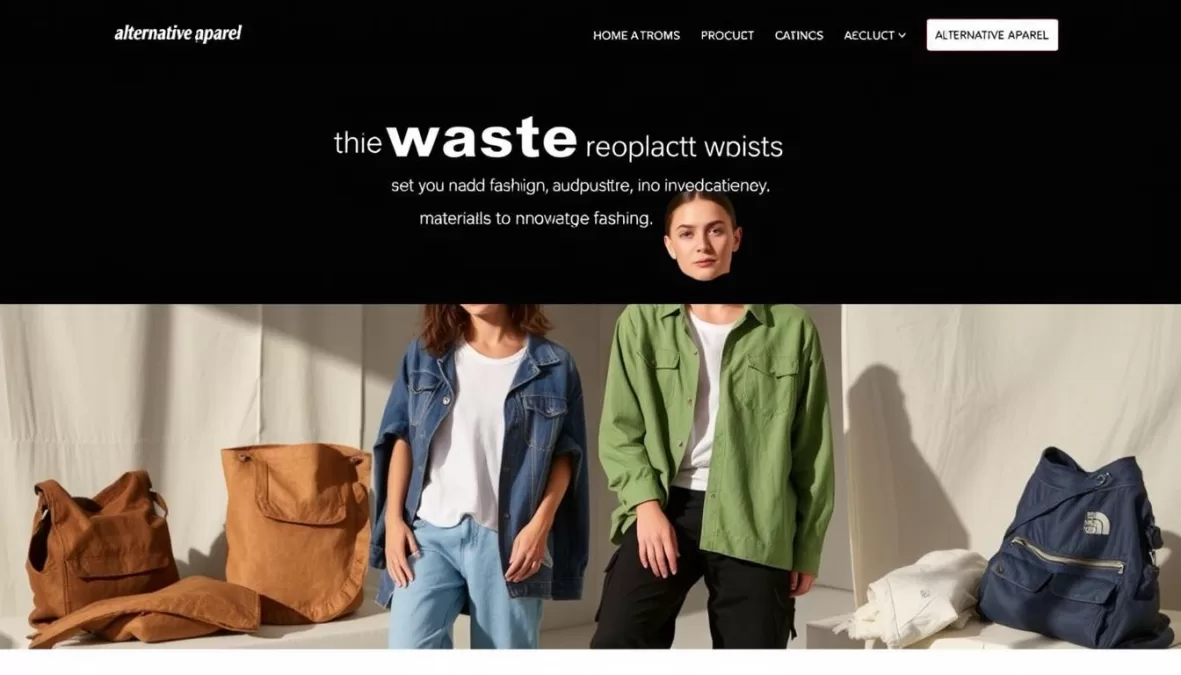
Alternative Apparel is revolutionizing the fashion industry with its zero-waste commitment. The brand uses recycled materials like reused polyester, organic cotton, and man-made sustainable fibers like rayon to minimize its environmental footprint.
The brand’s commitment to sustainable practices is evident in its production processes, ensuring zero-waste and reducing the strain on natural resources. Alternative Apparel’s adherence to fair labor practices is verified through its Worldwide Responsible Accredited Production (WRAP) certification.
Recycled and Sustainable Fibers
Alternative Apparel’s use of recycled and sustainable fibers is a key aspect of its zero-waste commitment. The brand incorporates environmentally friendly materials into its products, reducing the need for virgin resources and minimizing waste.
The brand’s focus on sustainable materials not only benefits the environment but also promotes a more responsible approach to fashion production.
Fair Labor and Safe Working Conditions
Alternative Apparel prioritizes fair labor practices and safe working conditions throughout its supply chain. The brand complies with Fair Labor Association guidelines, ensuring that workers receive fair wages and work in safe environments.
The brand’s transparent factory relationships and regular audits enable continuous improvement in worker welfare and safety, demonstrating its commitment to ethical manufacturing practices.
Girlfriend Collective: Inclusive Sustainability
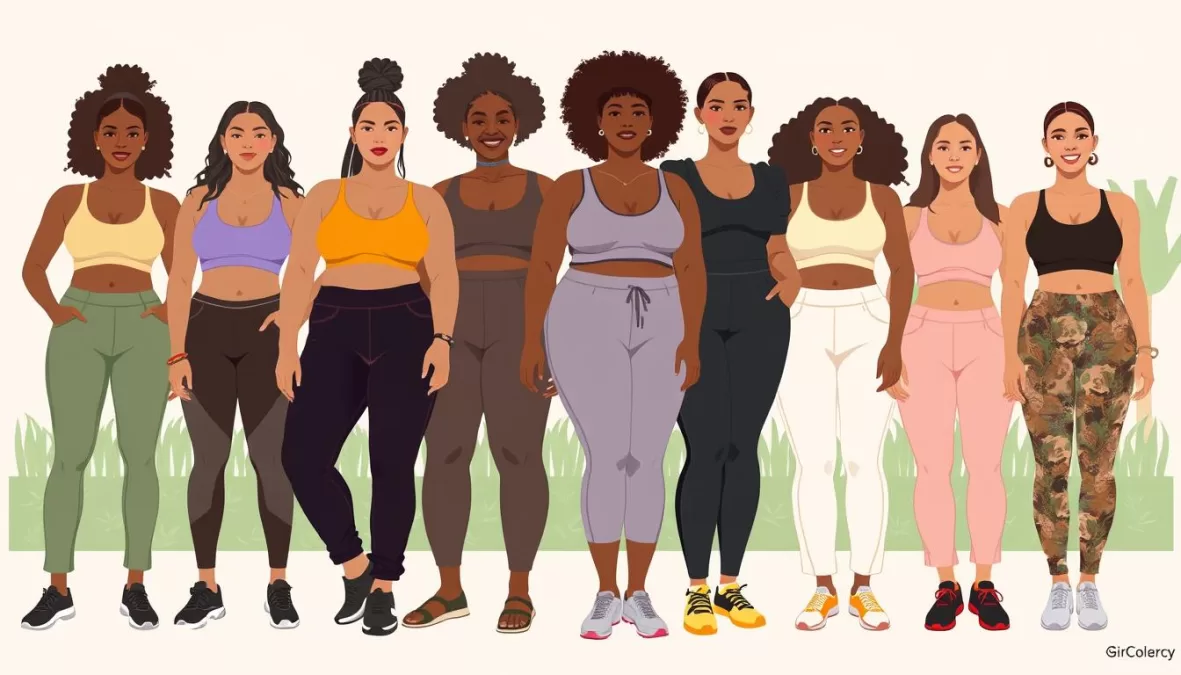
Girlfriend Collective stands out for its dedication to sustainable practices and size-inclusive designs. The brand has redefined inclusive sustainability by offering eco-friendly activewear in sizes XXS to 6XL, making sustainable fashion accessible to more body types.
Recycled Materials Innovation
Girlfriend Collective uses recycled materials, including ECONYL yarn, to create their activewear. This approach not only reduces waste but also minimizes the environmental impact of their products. Additionally, they offer a garment take-back program called ReGirlfriend, further emphasizing their commitment to sustainability.
Size-Inclusive Ethical Manufacturing
The brand is committed to ethical manufacturing practices, with their facility in Taiwan being SA8000 certified. This certification ensures fair wages, safe working conditions, and zero forced or child labor. Girlfriend Collective is also Fair Trade certified, reinforcing their dedication to transparency and inclusive practices.
Their marketing features diverse models representing various body types, ages, and backgrounds, challenging conventional beauty standards in sustainable fashion. By combining eco-friendly materials with ethical manufacturing and inclusive sizing, Girlfriend Collective sets a new standard in activewear.
tentree: Environmental Reforestation Leader
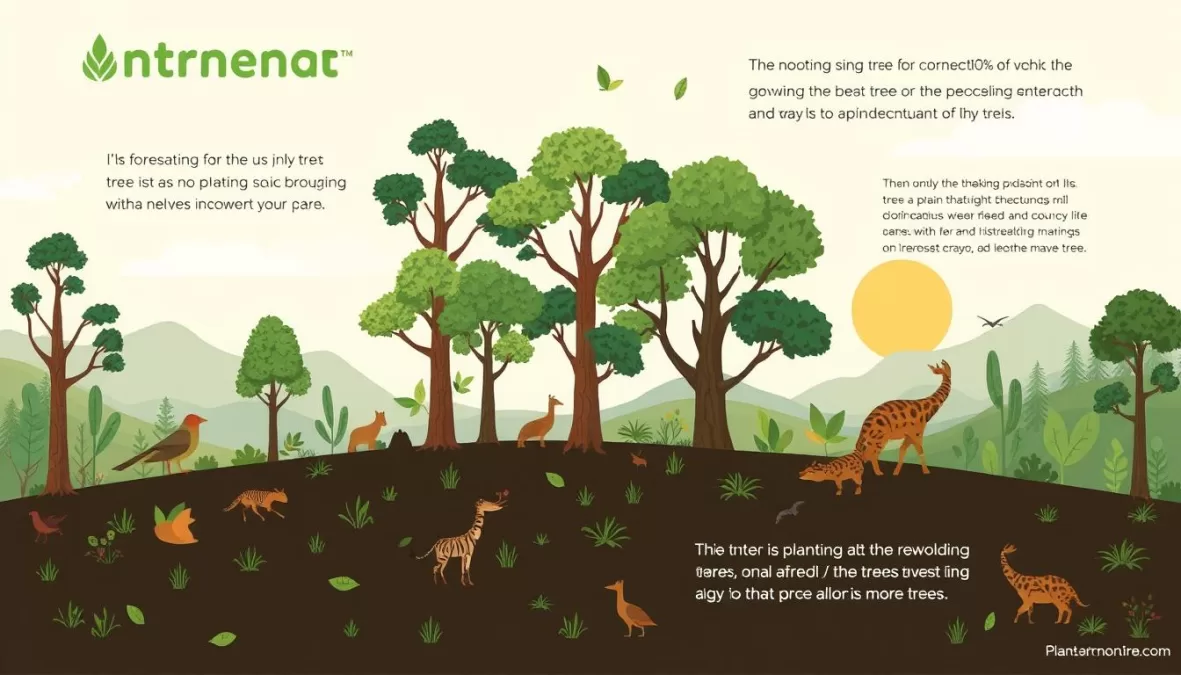
tentree is revolutionizing the fashion industry with its commitment to environmental reforestation. By integrating sustainability into every aspect of their business, tentree is setting a new standard for eco-friendly fashion.
Ten Trees for Every Purchase
For every item sold, tentree plants ten trees, making a significant contribution to reforestation efforts worldwide. This initiative not only helps to offset carbon emissions but also promotes biodiversity and ecosystem health.
Sustainable Materials and Production
tentree’s commitment to sustainability extends beyond reforestation. They utilize responsibly sourced and recycled materials, including organic cotton, hemp, recycled polyester, and TENCEL™ lyocell. Their production facilities are selected based on their environmental practices, with a preference for those using renewable energy and water recycling systems.
The brand’s focus on sustainable clothing is evident in their material choices and production methods, which minimize environmental impact. Additionally, tentree’s packaging is 100% plastic-free, using recycled paper products and compostable materials to reduce waste.
By emphasizing sustainable production practices and recycled materials, tentree is reducing its ecological footprint while promoting a more sustainable fashion industry.
The Future of Sustainable Fashion: Trends for 2025 and Beyond
As we look towards 2025, the sustainable fashion industry is on the cusp of a significant transformation driven by technology, policy, and changing consumer behaviors. The industry is expected to witness a paradigm shift with the integration of innovative materials, circular business models, and stringent regulations.
Technological Innovations in Sustainable Materials
The development of sustainable materials is a critical aspect of the industry’s transformation. Technological innovations are enabling the creation of materials that are not only eco-friendly but also offer superior performance. For instance, biodegradable fabrics and recycled materials are gaining traction, reducing the environmental footprint of fashion products.
Circular Business Models and Resale Programs
Circular business models are becoming increasingly popular as they promote the reuse and recycling of products. Resale programs, in particular, are gaining momentum, allowing consumers to buy and sell second-hand clothing. This shift is not only reducing waste but also providing consumers with more affordable and sustainable options.
Policy Changes and Industry Regulations
Policy changes and industry regulations are playing a crucial role in shaping the future of sustainable fashion. Governments around the world are implementing regulations to reduce the environmental impact of the fashion industry. For example, the EU’s Corporate Sustainability Due Diligence Directive (CSDDD) and Ecodesign for Sustainable Products Regulation (ESPR) are set to drive significant change. Companies will need to comply with these regulations, ensuring transparency and accountability in their supply chains.
| Regulation | Description | Impact |
|---|---|---|
| EU’s CSDDD | Corporate Sustainability Due Diligence Directive | Increased transparency and accountability in supply chains |
| ESPR | Ecodesign for Sustainable Products Regulation | Improved sustainability of products through ecodesign |
| California’s Responsible Textile Recovery Act | Extended Producer Responsibility (EPR) law | Textile and apparel companies to address end-of-life issues |
The future of sustainable fashion is bright, with technological innovations, circular business models, and policy changes driving the industry towards a more sustainable and responsible future.
How to Build a Sustainable Wardrobe
Building a sustainable wardrobe is a journey that requires commitment, patience, and a clear understanding of what makes fashion truly sustainable. As highlighted by a 2019 UN report, shoppers now buy 60% more clothing but keep these items for only half as long as they did in 2004, underscoring the need for a more mindful approach to fashion consumption.
Investment Pieces for Longevity
Focusing on quality over quantity is crucial. Investing in a few high-quality, timeless pieces rather than buying cheap, trendy items can significantly reduce waste and support sustainable fashion. These investment pieces are designed to last, both in terms of durability and style, making them a valuable addition to any wardrobe.
Care and Maintenance for Longevity
Proper garment care is essential for extending the life of your clothes. Simple practices like washing clothes less frequently and at lower temperatures can conserve energy and water, while preventing premature fabric deterioration. Air-drying instead of using dryers can also help maintain the quality of your clothing. Additionally, learning basic mending skills and using quality care products can further enhance the longevity of your wardrobe.
Challenges Facing Sustainable Fashion
Sustainable fashion is at a crossroads, grappling with the dual demands of affordability and ethical production practices. The industry’s sustainability professionals are caught in a bind as they strive to make a positive impact while remaining competitive in a crowded market.
Balancing Affordability and Ethical Production
The tension between affordability and ethical production is a significant challenge. According to McKinsey & Co, in 2025, fashion brands are more preoccupied with maintaining profitability than pursuing net zero emissions. Consumer research suggests that Generation Z cares about sustainability, but this concern doesn’t always translate into purchasing decisions. The reality is that eco-friendly clothing often comes with a higher price tag, making it difficult for brands to balance their commitment to sustainability with the need to remain affordable.
Greenwashing and False Sustainability Claims
Another major issue facing sustainable fashion is the prevalence of greenwashing and false sustainability claims. As consumer demand for sustainable products grows, some brands have resorted to using vague terms like “eco-friendly” and “natural” without substantiation. This lack of transparency makes it challenging for consumers to distinguish between genuine sustainability efforts and marketing tactics. To combat this, third-party certifications and transparency tools are emerging as crucial solutions, helping consumers navigate sustainability claims and hold brands accountable.
The Consumer’s Role in Driving Sustainable Fashion
Consumers play a crucial role in promoting sustainable practices within the fashion industry. By making conscious choices, individuals can drive change and encourage brands to adopt more sustainable methods.
Voting With Your Wallet
One of the most direct ways consumers can influence the industry is by choosing to support brands that prioritize sustainability. This includes opting for clothing made from eco-friendly materials, buying second-hand, and investing in quality over quantity. By doing so, consumers can reduce their environmental impact and promote sustainable fashion.
Advocacy and Awareness
Beyond purchasing decisions, consumers can drive change through advocacy and raising awareness about the fashion industry’s environmental and social impacts. Social media platforms provide a powerful tool for consumers to question brands, demand transparency, and hold companies accountable. Supporting policy initiatives and participating in community events like clothing swaps and repair workshops also contribute to systemic change in the industry. Furthermore, education about the true cost of fashion is essential for shifting cultural norms towards more sustainable consumption patterns.
| Consumer Action | Impact on Sustainability |
|---|---|
| Buying second-hand clothing | Reduces waste and supports sustainable fashion |
| Demanding transparency from brands | Encourages ethical practices and accountability |
| Participating in clothing swaps | Fosters community engagement and reduces waste |
Conclusion
The year 2025 has seen a significant shift in the fashion industry, with sustainability emerging as a key driver of innovation and growth. The top 10 sustainable brands of 2025 are not just creating eco-friendly products; they’re pioneering a fundamental transformation of the fashion industry toward greater responsibility and care for people and planet.
These innovative companies demonstrate that sustainability and style can coexist, offering consumers beautiful, functional clothing without compromising environmental or social values. While challenges remain in scaling sustainable fashion and making it accessible to all consumers, the brands highlighted in this article prove that progress is possible and profitable.
The future of fashion lies in circular systems, innovative materials, transparent supply chains, and business models that prioritize longevity over planned obsolescence. As consumers, our choices matter—by supporting truly sustainable brands, demanding transparency, and changing our relationship with clothing, we can collectively drive the fashion industry toward a more sustainable future.
The transition to sustainable fashion is not just about better clothing; it’s about creating an industry that respects planetary boundaries, honors human dignity, and provides joy and self-expression without exploitation or waste. By embracing top sustainable practices and brands, we can create a more environmentally conscious and socially responsible fashion industry for the future, driving positive change for the environment.

